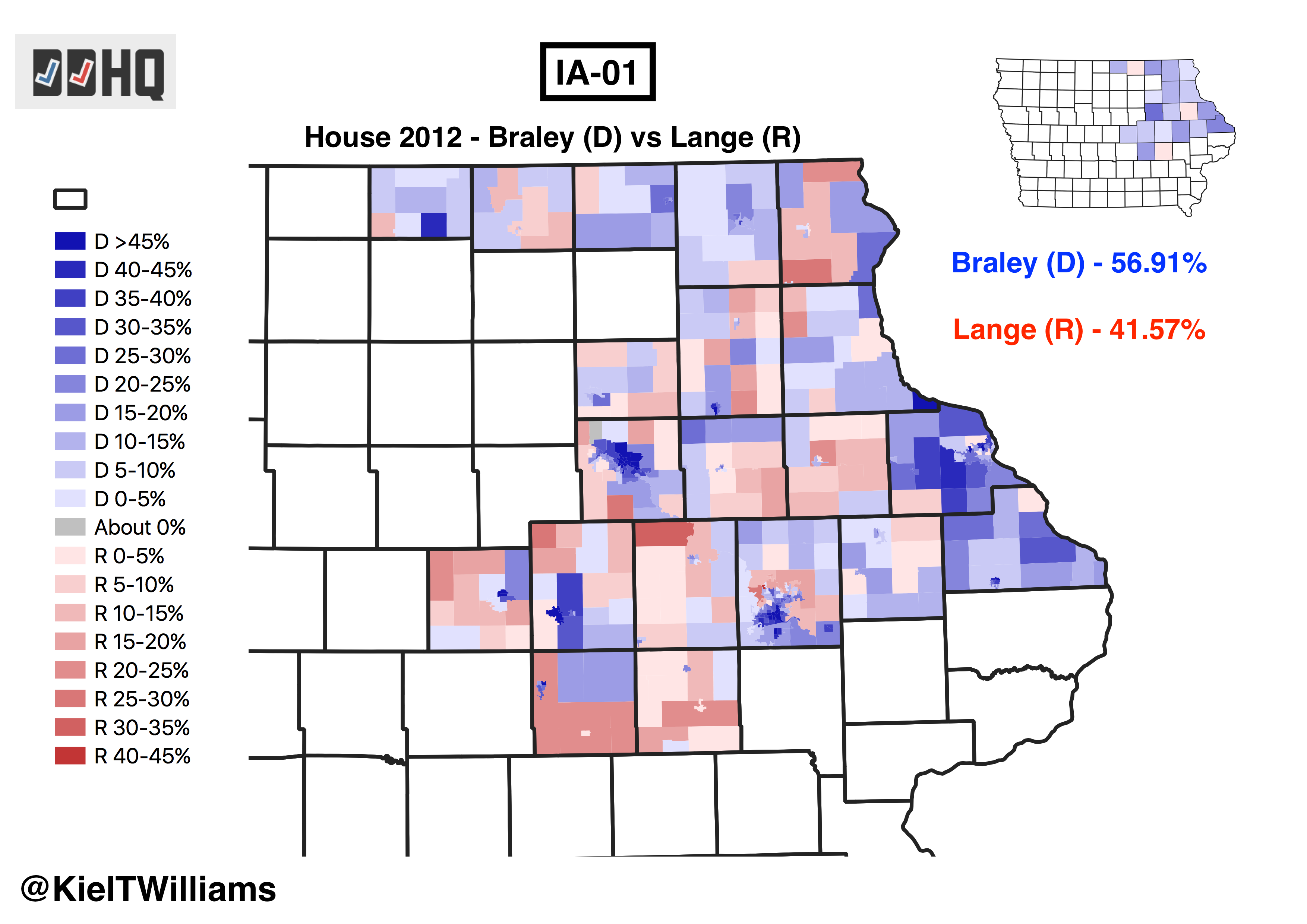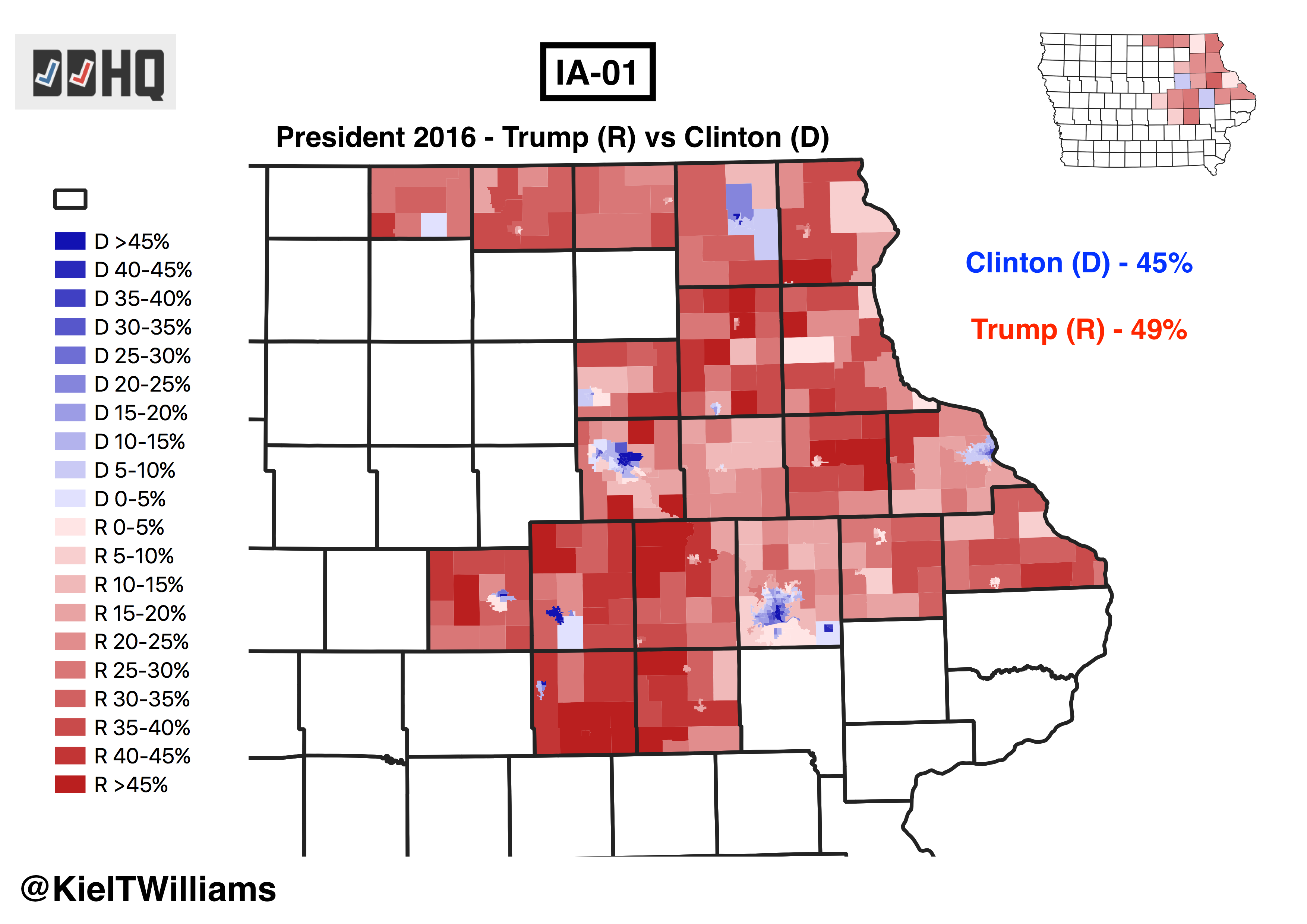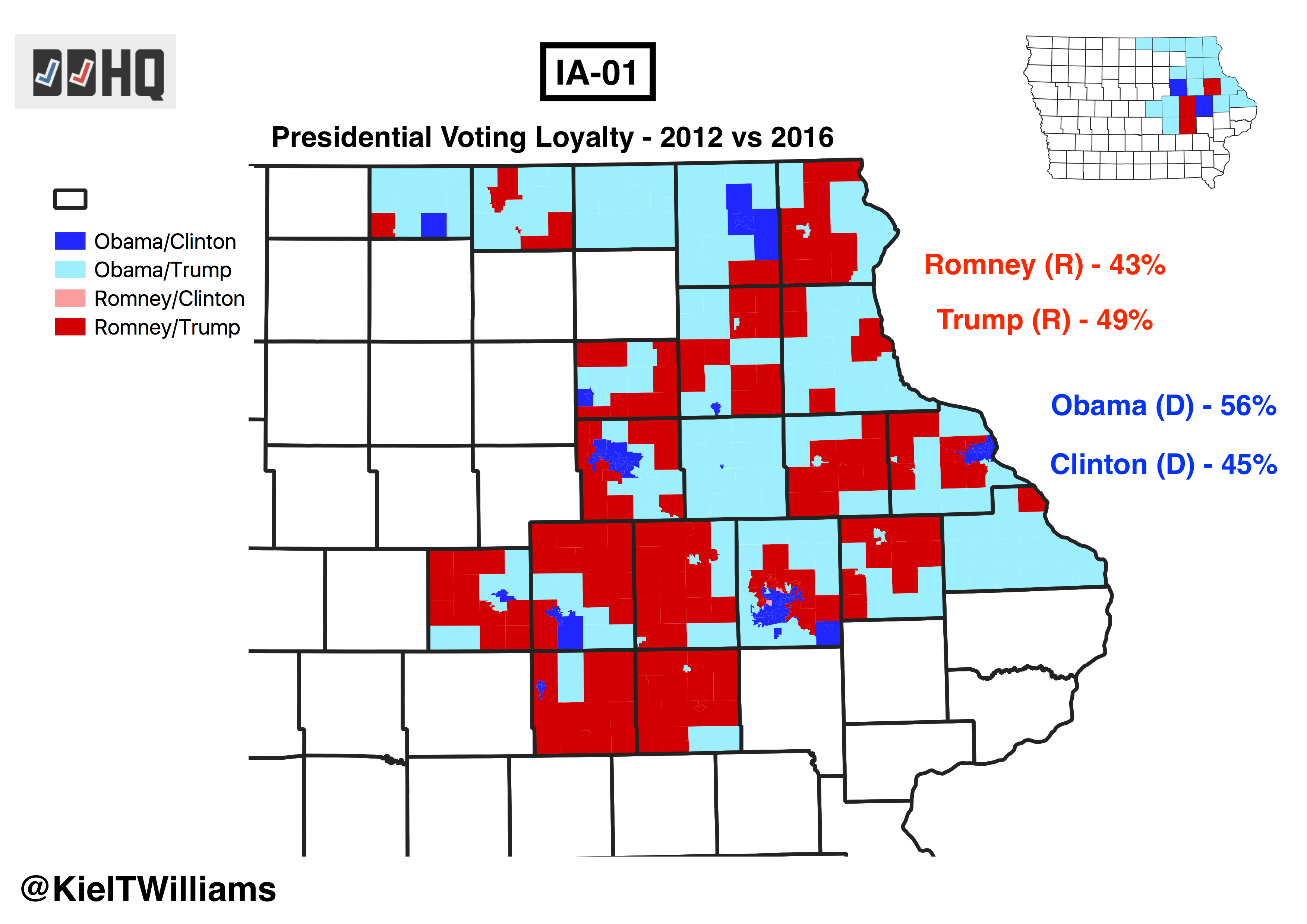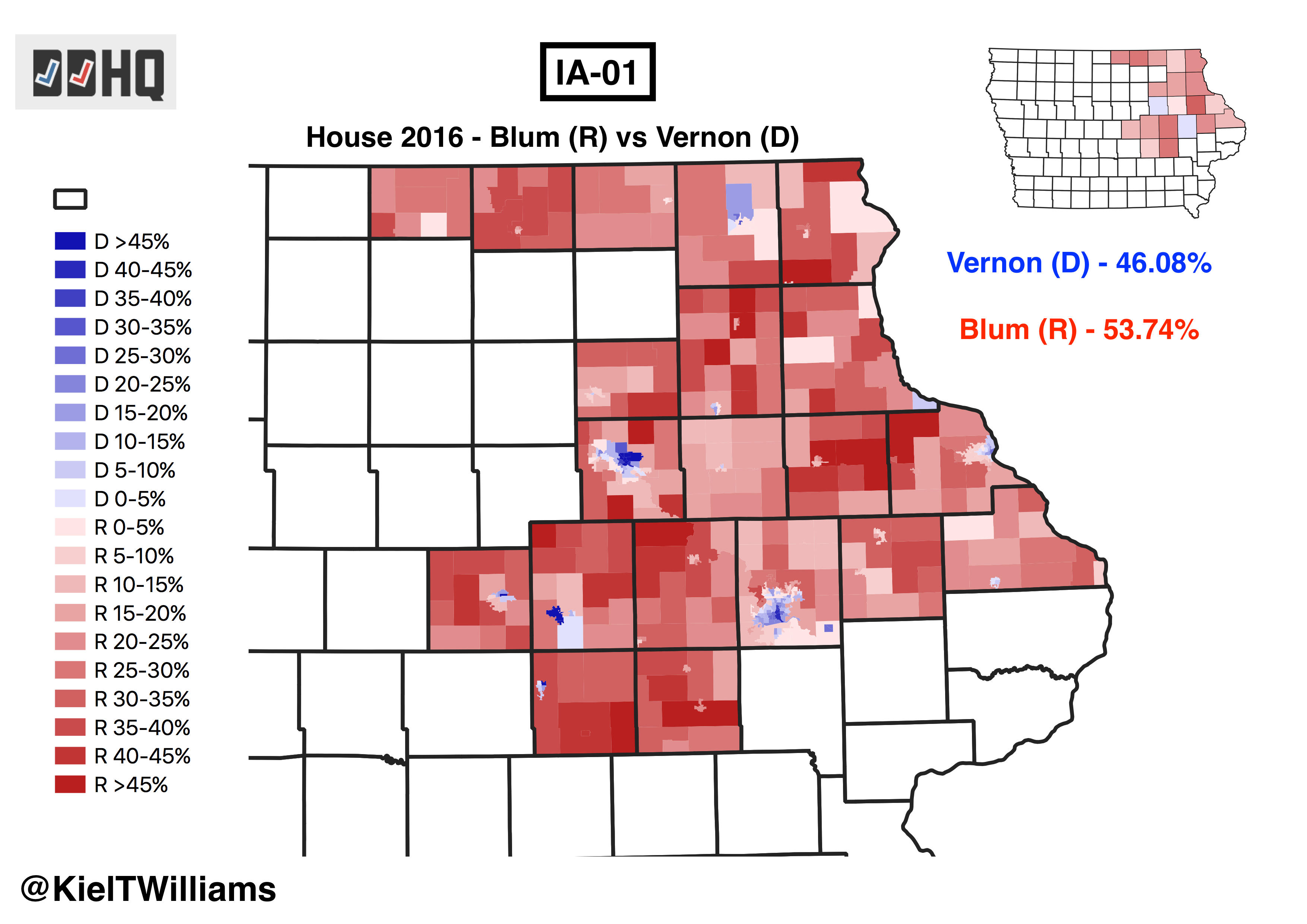It’s become cliche to talk about the role of midwestern whites in elevating Donald Trump to the White House. But if you were looking for a Ground Zero in midwestern whites’ abandonment of the Democratic Party, you could do much worse than Iowa’s first congressional district.

This district – containing the mid-sized cities of Cedar Rapids, Waterloo, and Dubuque – is 93% white, and supported Barack Obama by a margin of 13 points during his 2012 reelection campaign. And Obama didn’t win by running-up the score in those urban centers – he remained competitive in outlying rural regions, and ultimately carried all but 3 counties in the district. That’s how Democrats kept Iowa in their column for so long: despite stereotypes, rural midwestern whites in places like IA-01 used to vote for Democrats in substantial numbers.

The 2012 election also saw Rep. Bruce Braley (D) easily reelected to his 4th term in the House. Note that his map and margin were very similar to those produced by Obama. People here weren’t just voting for Obama – they were voting for Democrats up-and-down the ticket.

The 2014 midterm election saw a sea-change in how this region voted. Bruce Braley retired from his House seat to wage an unsuccessful Senate campaign against Joni Ernst (R), leaving behind a rightward-trending open seat that was ripe for the taking by Republicans. Businessman and Tea Party-supporter Rod Blum (R) ultimately defeated state representative Pat Murphy (D) by around 2 points, riding on the back of the 2014 Republican wave. But the structure of Blum’s victory portended dark days to come for Iowa Democrats: their traditional rural support collapsed, with Murphy’s voters confined mostly to the large cities. Blum ran-up massive margins in rural regions.

The rightward lurch of the district continued in 2016. As Democrats’ Blue Wall collapsed on election night 2016, IA-01 – a district that had voted for Barack Obama by 13 points, just 4 years prior – voted for Donald Trump by 4 points. Trump completely ran-the-table on rural precincts in the district, and Clinton’s urban support wasn’t enough to drag her over the line.

Highlighting the many Obama-to-Trump precincts in the district brings the Democratic struggle here into focus. Even as Democratic support in the cities of Cedar Rapids, Waterloo, and Dubuque solidified, the massive erosion of rural support was far too much to overcome. The much-discussed college-educated whites who were supposed to flee from Trump during 2016 never really materialized here.

Supported by Donald Trump’s popularity in much of the district, Rod Blum was comfortably reelected against Cedar Rapids city councilwoman Monica Vernon (D). Vernon struggled even more than Clinton, losing a number of outlying urban precincts that Hillary was able to hold.
Democrats this year are mounting a serious challenge to Rod Blum. Their nominee is 2-term state representative Abby Finkenauer, who has thus far out-raised her opponent. Most national forecasters view the race as competitive. The Øptimus legislative model currently gives the GOP a 54% chance of retaining the seat.
(Thanks to Miles Coleman for providing some of the data used in this analysis.)